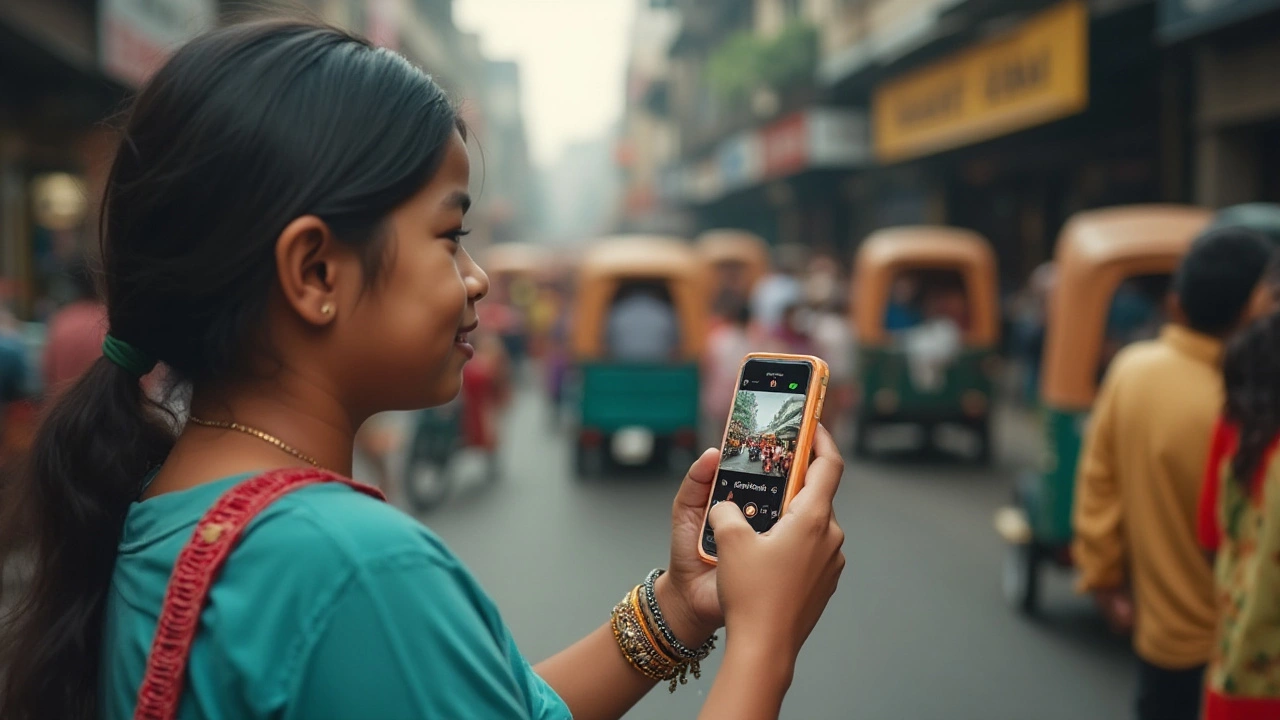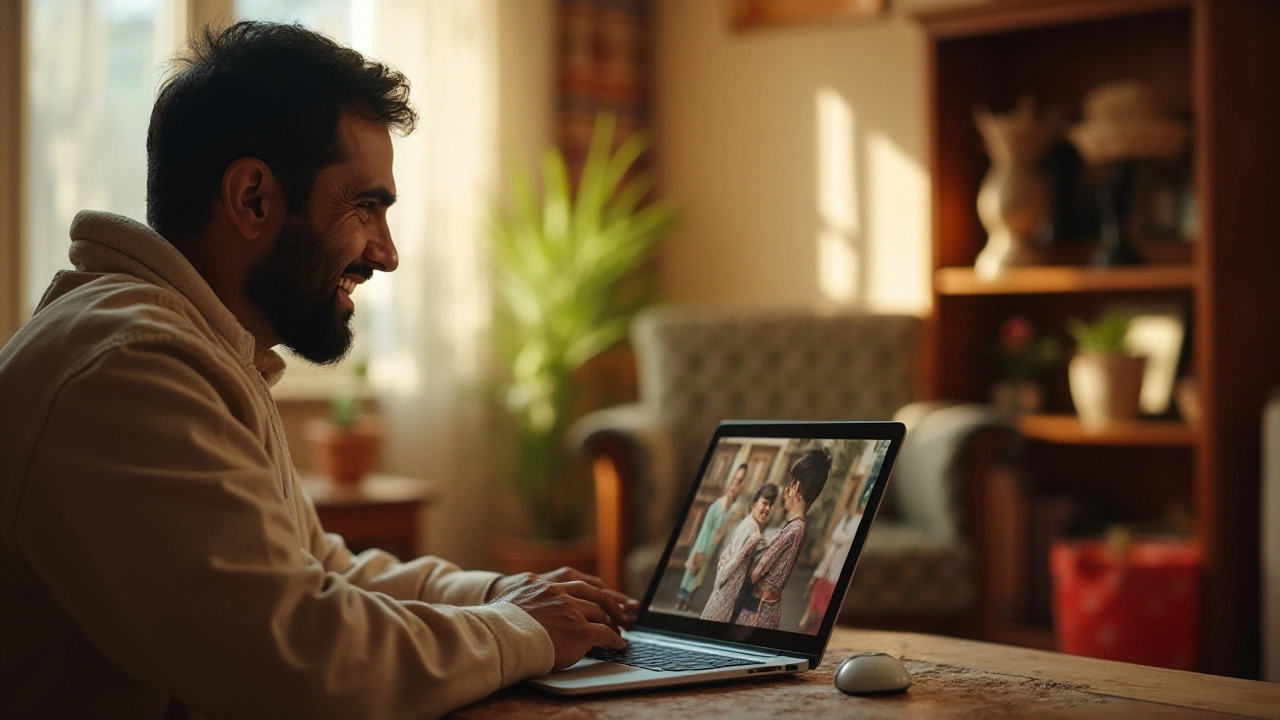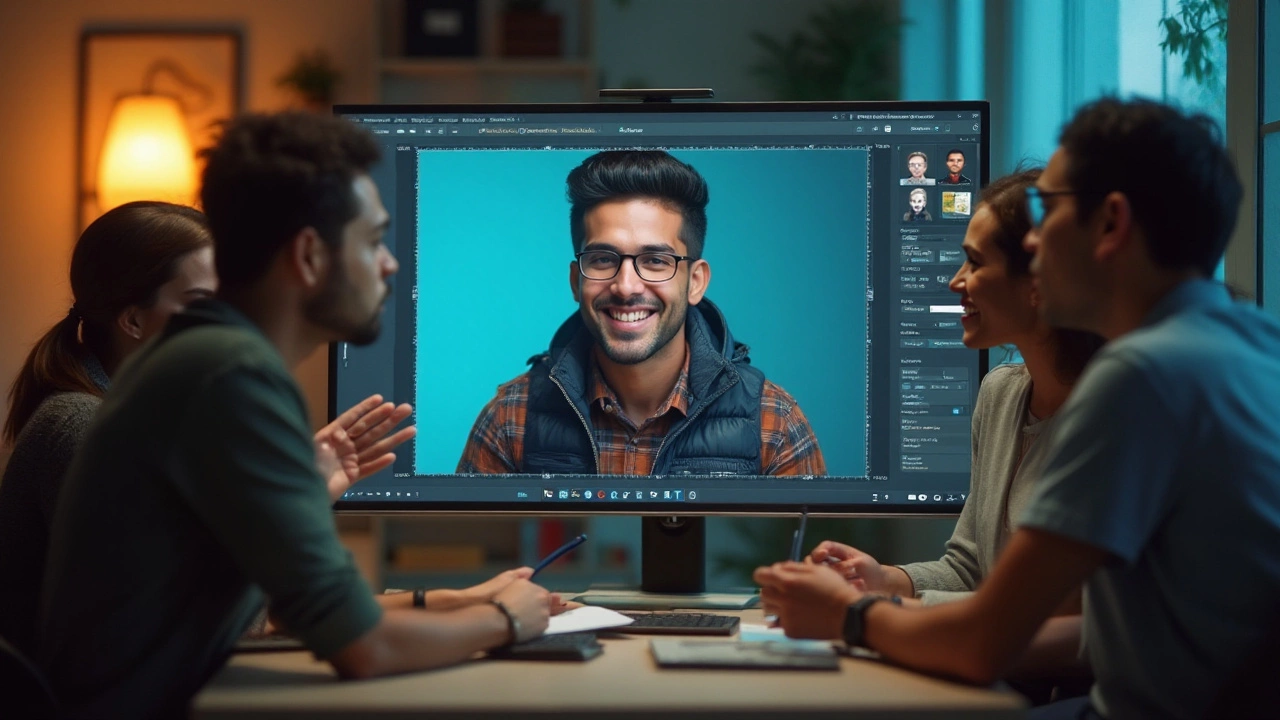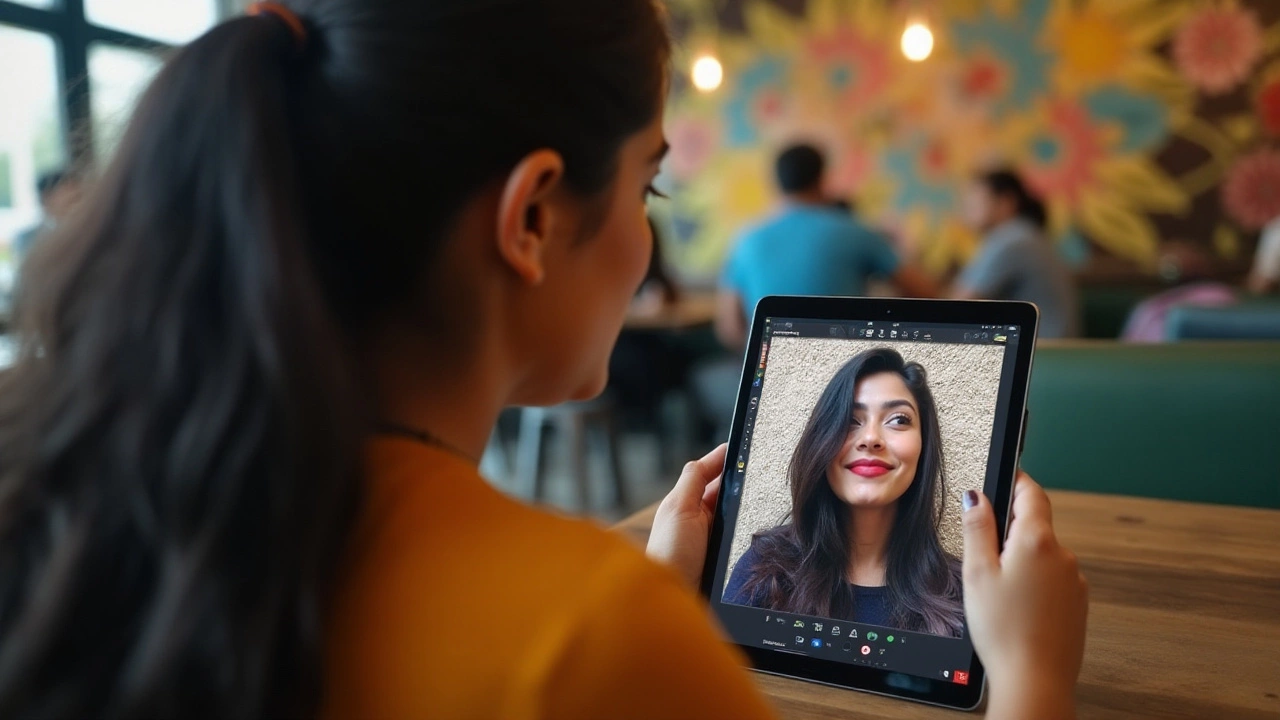How to Edit People in Photos for Free Using Top Apps
 Dec, 14 2024
Dec, 14 2024
In a world where every snapshot is a potential masterpiece, having the right tools to enhance your photos is invaluable. With smartphones and cameras at our fingertips, it's become easier than ever to capture moments. But sometimes, a picture is not perfect until you make a few tweaks—like editing a person in or out of the frame.
You might think this requires complex software or a visit to a professional, but today, there are various free tools available that allow you to do this right from your device. These tools are not only cost-effective but also offer a range of features that suit both beginners and more experienced users alike. Let's dive into how these tools can transform your photos without costing a dime.
- Getting Started with Free Apps
- Popular Free Editing Tools
- Step-by-step Editing Guide
- Tips for Achieving the Best Results
Getting Started with Free Apps
Getting into the world of photo editing doesn't have to be intimidating or expensive. Thanks to advancements in technology, there's an abundance of free apps at your disposal that can help you edit people in your photos with ease. Whether you're on Android or iOS, these apps provide substantial features that let you make professional-looking edits without spending a penny. The key lies in understanding what each app offers and finding one that aligns with your needs.
Take, for instance, apps like Snapseed and PicsArt. Snapseed, developed by Google, is favored by many for its intuitive interface and powerful editing tools. It’s particularly popular for features like the Healing tool, which allows you to remove unwanted people or objects from your photos with just a few taps. Removing people from a bustling city shot or even just extra passersby in a beautiful landscape becomes a hassle-free task. PicsArt, on the other hand, offers a vast array of creative tools. It's not just about removing or adjusting people in your photos; it also lets you transform their appearance completely, from changing hair color to applying makeup effects.
Getting started with these apps generally follows a straightforward process. Usually, you begin by downloading the app from your device’s app store. Once installed, open the app and import the photo you want to edit. This is typically done through an ‘Import’ button that directs you to your photo gallery. Select your image, and from there, dive into the editing suite provided by the app. For instance, in Snapseed, you might choose 'Tools' and then 'Healing' to start editing. In PicsArt, you can go for 'Retouch' to work on altering or enhancing the person in your image.
Interestingly, according to recent surveys, over 75% of smartphone users have edited their photos at least once using a free app, with most reporting satisfaction in the ease of use and the quality of results. This goes to show how accessible and effective these tools are. Notably, photography expert Emma Green once said,
"In the realm of digital photography, the lines between professional tools and DIY apps are increasingly blurred, empowering everyone to achieve striking imagery at no cost."It's a fascinating trend that highlights the democratization of photo editing capabilities.
In essence, venturing into the realm of photo editing via free apps can be a rewarding journey. Understanding each app's unique features and interfaces is crucial in ensuring you maximize their potential. So, before investing in costly software, explore what these powerful free tools have to offer. They might surprise you with their capabilities, making editing pictures an enjoyable and creative endeavor.

Popular Free Editing Tools
In the era of smartphone photography, the demand for accessible and effective photo editing tools has skyrocketed. Thankfully, the app stores are teeming with options tailored to various editing needs, from simple touch-ups to intricate modifications like altering a person in a photo. One of the most popular apps in this category is Snapseed, developed by Google. It offers a comprehensive suite of editing tools that are surprisingly robust given its free-to-use nature. Features such as the selective adjust tool allow users to make precise changes to specific parts of a photo, which is particularly useful when targeting changes on a person in the image.
Alongside Snapseed, another strong contender is Adobe Photoshop Express. While the name might suggest complexity, the mobile version trims the fat of its desktop cousin, concentrating on intuitive features that cater to both novices and seasoned photographers. With options to adjust blemishes, add text, and employ sophisticated filters, Photoshop Express ensures your photo gets that extra polish without financial commitment.
"Photoshop Express provides a powerful, user-friendly experience which bridges the gap between accessibility and professional quality capabilities," highlights a review from Photography Life.A newer player making waves is Pixlr, which boasts both a mobile app and a browser-based editor, making it incredibly versatile for editing on-the-go or at a desk.
Let's not overlook toolkits like GIMP, a free open-source desktop editor, offering capabilities comparable to professional-grade software for those who prefer working on a bigger screen. Its flexibility is a boon for users who delve deeper into editing, though it does come with a slightly steeper learning curve. Meanwhile, for people who enjoy creatively blending human elements into their artwork, apps like Befunky can be quite valuable. They have a user-friendly interface and offer features like cutout and overlay modes which can cleverly integrate or remove people from images.
For optimal results, especially when you want to edit pictures, combining tools is often a good strategy. For instance, starting your edits in Snapseed for a bulk adjustment, then moving the picture into Photoshop Express for fine-tuning, gives a broader range of possibilities. This multi-layered approach is not only efficient but also expands creative horizons, ensuring no detail is left unattended. Such flexibility is rarely found in fully free products, and exploring these platforms can be a game-changer for anyone interested in digital artistry.
Finally, many of these apps come with guided tutorials and community forums, which can be especially beneficial if you're just starting. This community-driven support system is inclusive, catering to a wide array of free apps which specialize in editing images, helping enhance your skills progressively. Whether you're trying to sharpen your Instagram feed or create a digital photo album, these free editing tools offer ample opportunities to elevate your work with minimal investment.

Step-by-step Editing Guide
Editing a person in a photo has become a breeze, thanks to the plethora of photo editing apps readily available today. Before diving into this process, it's important to choose the right tool. For instance, apps like Snapseed, GIMP, and Photopea offer robust features for free. The idea is to make changes that enhance the photo while maintaining realism. Each tool has its own set of capabilities, so selecting one that meets your specific needs is key. Spending a few minutes exploring the app interface will pay off in terms of saving time and frustration later.
When you're ready to start, the first step involves uploading your image to the chosen app. This is usually straightforward; simply open the app, navigate to the upload option, and select the photo you wish to edit. Next, determine what specific edits you want to make. Whether it’s altering a person’s appearance or completely removing them, knowing this beforehand helps streamline the process. Begin by resizing the image if needed, to make sure all details are clear and adjustments can be accurately applied. Familiarize yourself with basic editing tools like cropping, exposure, and color correction, as they lay the groundwork for more advanced edits.
Utilizing Editing Tools
Once the basic adjustments are covered, it's time to dive into more detailed changes. Apps like GIMP and Photopea offer layer-based editing, which is essential for cleanly editing people out of pictures. By using layers, you can separate different elements of the photo, working with each independently without affecting the rest of the image. This layered approach is highly effective for complex edits. For instance, want to remove someone from a group photo? Use the clone stamp or healing brush tools, which replicate textures from surrounding areas to seamlessly cover unwanted objects or people.
"Photo editing is an art, and like all arts, it requires patience and practice to master," says Tony Northrup, a renowned photographer and educator.
If adjusting an individual’s features is on the agenda, many of these apps include retouching tools. These allow you to enhance or reduce certain aspects like blemishes or wrinkles while maintaining a natural look. Experiment with these tools on a separate copy of your image to gauge what works best. The goal is to enhance the image while ensuring it remains authentic, so subtlety is key.
Finalizing Your Edits
After making the desired changes, take the time to review your edits. This can often involve zooming in and out to inspect details closely. Little mistakes can sometimes go unnoticed until the photo is viewed at different scales. Once you're satisfied, save your work. It's always wise to save a copy of both the edited and original photos for future reference. Many editing apps will prompt you to save in multiple formats; choose one that suits your needs, typically JPEG for sharing online or TIFF for print. With just a little practice, you’ll find editing a person in a picture doesn’t have to be a daunting task, and the results can be truly impressive.

Tips for Achieving the Best Results
When it comes to editing people in photographs, getting the most natural and seamless outcomes is key. One vital aspect is making sure the lighting and shadows in your edited photos align with the surrounding environment. This attention to detail can be the difference between an edited picture that looks obviously tampered with and one that appears flawless. Consider tools that allow you to adjust brightness, contrast, and shadow to better blend the edited parts with the rest of the image. It's also worth experimenting with various filters that can disguise minor inconsistencies.
Aspect ratio and resolution are another two critical elements you must pay attention to. Whenever you alter images by removing or adding people, that can sometimes skew the picture’s dimensions. Always make sure that the edited images retain the original resolution to avoid a pixelated look. For social media platforms, knowing the ideal aspect ratio for each platform will help maintain image quality. A high-res image, even with a high degree of modification, will often look better and showcase your photo editing prowess.
Photo editing apps have a treasure trove of tools, yet knowing which ones to use and when can only be honed with practice. Many seasoned editors recommend taking a break after working on an edit to return with fresh eyes; this might help catch nuances or errors that were previously overlooked. A quote by Ansel Adams, a master of photography, often resonates in this field:
"You don’t make a photograph just with a camera. You bring to the act of photography all the pictures you have seen, the books you have read, the music you have heard, and the people you have loved."This reminds us how each component of an image tells a story, and adjusting those components should be a mindful process.
Embrace the tools labeled AI-efficient in many apps today; these features simplify complex edits with just a few clicks. For instance, neural filters can intelligently predict and fill in areas if you decide to remove a person. This is especially handy when tweaking intricate backgrounds. Yet, despite their power, these tools are not foolproof. Double-check the end result to ensure everything looks natural. Consistent practice will also make you more adept at knowing when to rely on advanced tools versus manual adjustments.
Lastly, consider sharing your newly edited photos with trusted friends or colleagues for feedback before going public. Often, a fresh pair of eyes can spot details you might have missed. Constructive criticism can guide you to making crucial changes that enhance the final result. By integrating these tips, you'll not only gain experience but also elevate your skills, delivering images that captivate and command attention.